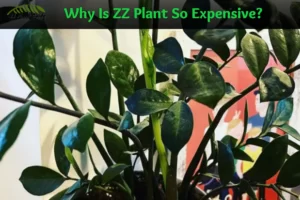Have you ever heard of ZZ plant? If not, it’s time to meet the king of low maintenance plants. That’s right, I said low maintenance.
No more excuses for not having a green thumb! So, does the ZZ plant need drainage? This is a common question that most people ask.
Well, I’ve got all the answers you need about whether this popular houseplant requires drainage or not. Let’s dive in!
The Basics of Drainage in Plants
Before we get into the ZZ plant, let’s first understand what drainage is and why it’s important for plants.
Drainage is simply the flow of water out of the pot. It’s important because too much water can cause roots to rot, which can lead to plant death.
A good drainage system allows excess water to escape, preventing roots from sitting in water for too long. This helps to maintain a healthy environment for the roots to grow.
Does ZZ Plant Need Drainage?
The ZZ plant is one of those rare species that doesn’t actually need drainage to thrive. That’s right, you heard it here first.
This plant can actually tolerate sitting in water for short periods of time, which makes it a great choice for someone who may forget to water their plants every once in a while (hey, we’ve all been there!).
However, it’s still important to not over-water the plant and to provide good drainage to prevent water from sitting in the pot for too long.
Imagine that you just brought home a new ZZ plant and put it in a pot with no drainage holes. You water the plant regularly, but the water has nowhere to go and the soil becomes waterlogged. Over time, the roots of the plant start to rot, causing the plant to become stunted, yellow, and eventually die.
Now, imagine the same scenario, but this time you put the ZZ plant in a pot with adequate drainage. When you water the plant, the excess water can escape through the drainage holes, preventing the soil from becoming waterlogged.
The roots have access to oxygen and can continue to grow, leading to a healthy and thriving ZZ plant.
How to determine if your ZZ plant needs drainage?
Determining whether your ZZ plant needs drainage is important to keep it healthy and thriving. Here are some steps you can follow to determine if your ZZ plant needs better drainage:
Check the soil moisture
Stick your finger into the soil about 1-2 inches deep. If the soil feels wet or soggy, it may indicate that the water is not draining properly.
Look for yellowing leaves
If the lower leaves of your ZZ plant start yellowing, it could be a sign of overwatering and poor drainage. The excess water can lead to root rot, which can cause the yellowing of the leaves.
Observe root growth
If the roots of your ZZ plant are growing out of the drainage holes in the bottom of the pot, it’s a sign that the soil is waterlogged and that your plant needs better drainage.
Check for mold or mildew
If you see mold or mildew growing on the surface of the soil, it could be a sign of poor air circulation and poor drainage.
If you observe any of these signs, it is a good idea to take steps to improve the drainage for your ZZ plant.
Different methods for improving drainage in ZZ Plants
Using a well-draining potting mix
Using a potting mix specifically formulated for well-draining soil can help improve the drainage for your ZZ plant. You can purchase a commercial potting mix that contains ingredients such as perlite, vermiculite, or coarse sand, which help with water drainage.
Adding perlite or sand to the soil
You can add perlite or sand to the soil to improve drainage. Simply mix a small amount of perlite or sand into the soil before planting your ZZ plant. The perlite or sand helps to create air pockets in the soil, which allows water to drain more efficiently.
Making drainage holes in the bottom of the pot
If your pot does not have any drainage holes, you can make some by using a drill or a sharp object such as a pencil. Simply make several holes in the bottom of the pot, making sure they are evenly spaced.
This will allow excess water to drain out of the pot, preventing the soil from becoming waterlogged.
Wrap Up!
The ZZ plant is a tough little guy that doesn’t require drainage to thrive, but it’s always a good idea to provide a little bit of drainage to keep the roots healthy and prevent water from sitting in the pot for too long.




